Neuma
Data organization: The hierarchy of corpuses and opuses
The main objects managed in Neuma are corpus(es) and opus(es). They
implement a data organization comparable to the classical
concepts of directories and files in a computer. A corpus
is a container. Its content consists of either
opuses or (sub)corpuses.
An opus is a musical work, such as, e.g., The Goldberg variations
or The New World Symphony. Thus, data in Neuma is essentially
a hierarchy, rooted at as pseudo-corpus named all, where internal nodes
are corpuses, and leaves are opuses. :numref:dataorg illustrates the structure.
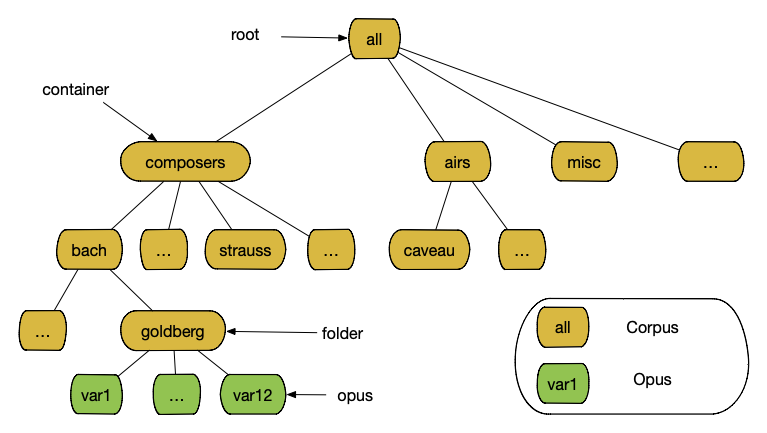
Both corpuses and opuses are described by textual meta-data, along with several other data items, e.g. typically files. In the following, for the sake of clarity, we will use the following terminology:
- a container is a corpus that contains sub-corpuses
- an folder is a corpus that contains opuses
A third, important type of object is called Source. A source is any digital document that represents an information about an opus. A source is typically a file that encodes the music in a format such as MusicXML or MEI. A source can also be an audio file, an image, a textbook, an external document that refers to the opus, etc.
Finally, an opus can be annotated. Annotations express a statement (the body) about an opus or one of its sources (the target).
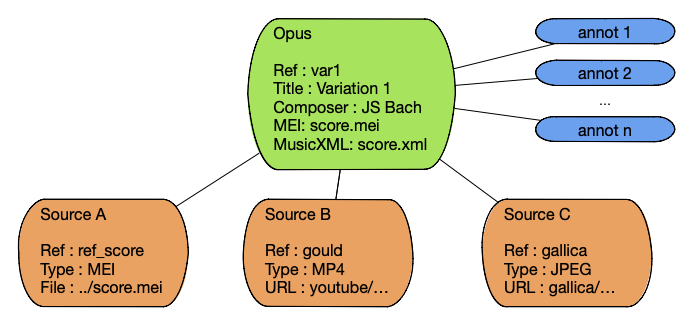
In Neuma, Corpus and Opus objects receive a unique and immutable reference when they are created. Since this reference is essential for further data management tasks, this is the first aspect to address.
Understanding references
Each object, whether corpus or opus, is identified by a unique Neuma reference.
- The local reference uniquely identifies an object in the context of
its corpus. For instance, in the context of the
goldbergcorpus,var1andvar12are local references uniquely identify opuses. - the global reference uniquely identifies an object in Neuma. It
takes the form of a path from the top-level corpus to the object,
represented as follows
all:ref2:...:refN, where each refi is a local reference.
The top-level corpus
reference is all, hence all paths begin with all:.
The first n-1 references are local corpus references (since
internal nodes of the hierarchy consist of corpuses).
The last reference is either a corpus local
reference of an opus local reference, depending of the
object referred to.
Let’s take some examples:
- the corpus Composers, with local reference
composers, located below the top-level corpus, hasall:composersas its global reference; - the corpus Monteverdi, with local reference
monteverdi, located below the Composers corpus, hasall:composers:monteverdias its global reference; - the opus Madrigal XII, with local reference
madrigal12, located below the Monteverdi corpus, hasall:composers:monteverdi:madrigal12as its global reference.
Global reference are therefore quite similar to absolute paths in a file system. *In Neuma, references are the primary mean to refer to an object (corpus or opus) and they are immutable.
The Corpus object
Initially, Neuma proposes the root corpus, and a few pre-defined corpuses (children of the root) for generic categories of musical works. They are shown on the welcome page of Neuma.

By clicking on a corpus’s icon, one obtain a page that details the corpus content. New corpus can be inserted in the hierarchy by authorized users. The complete list of corpuses, along with some stats of their opuses, is shown at http://neuma.huma-num.fr/home/collections
Let’s examine first the case
of a container, e.g., a corpus that contains
sub-corpus. Examine :numref:exploringCorpus below,
showing the page dedicated to corpus all:composers.
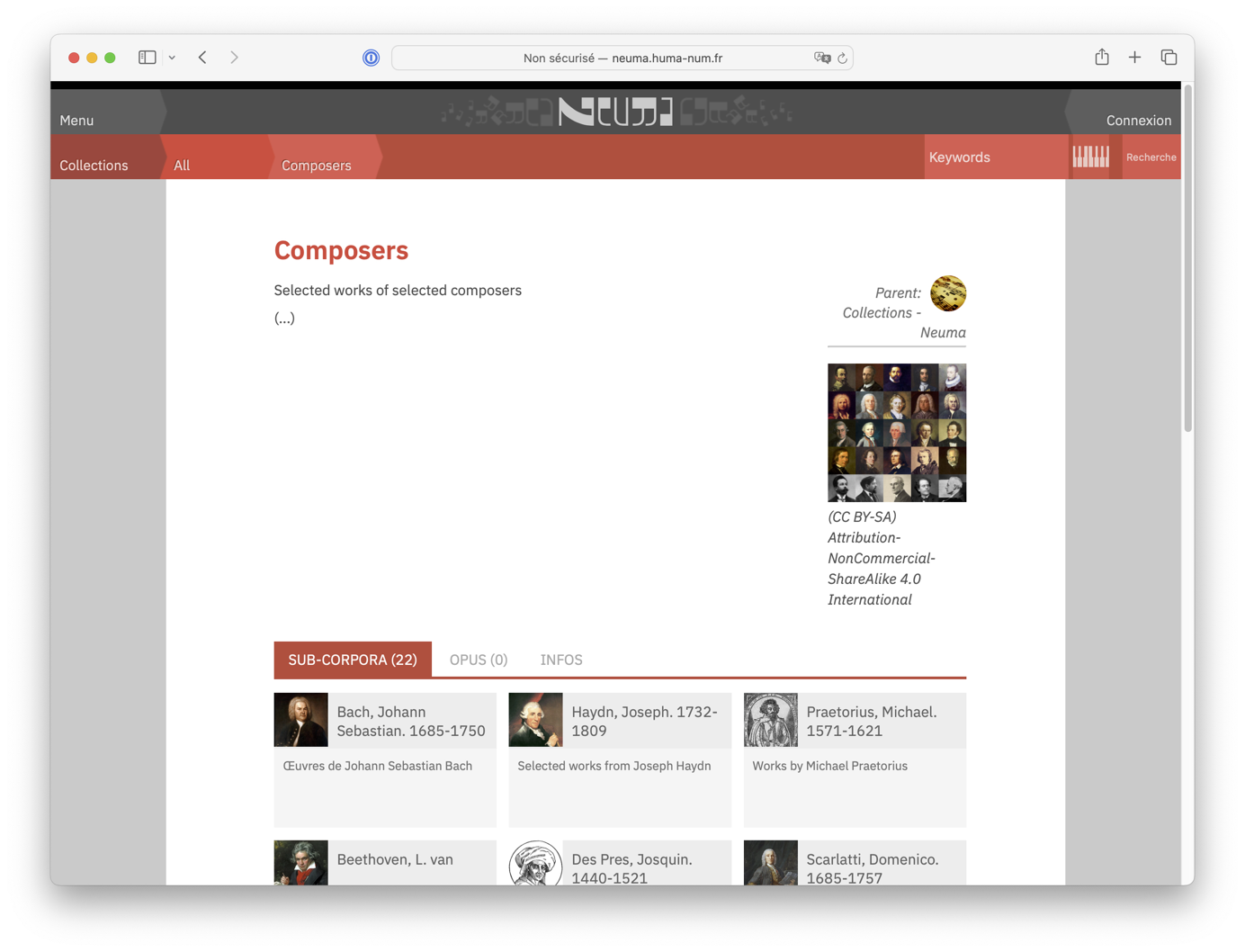
Each corpus consists first of some general informations:
- a title, in short and detailed form. The short form is used for navigation purposes: see the breadcrumb at the top of the page
- a description, also in short and detailed forms.
- a licence, that applies to all the corpuses contents
- a cover image, used as an icon in lists
- and finally, the list of sub-corpuses or opuses.
Note also that each corpus has a unique parent. By clicking on the parent’s icon, one can move up one level in the hierarchy.
It turns out that all:composers consists only of sub-corpuses,
one for each composer. For a folder, a corpus consisting of opuses, the page
presents a list with a music score incipit (:numref:exploringCorpus, showing
the first opuses of corpus all:airs:cdc).
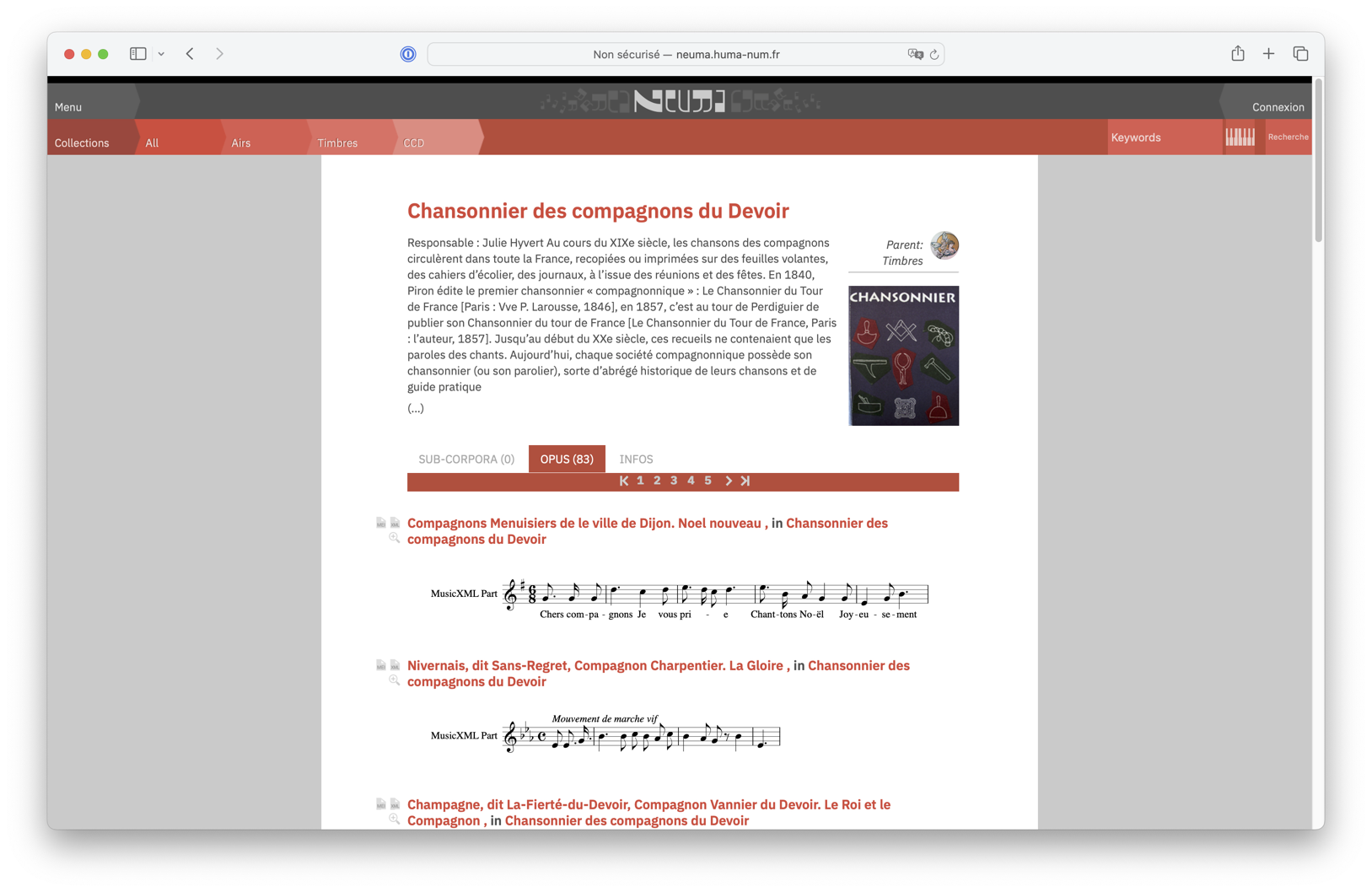
Each opus in the list is shown with a title, the composer (if known) and the corpus it belongs to. By clicking of the title, one can access to the page that details the opus.
Opus
An Opus gathers a set of information related to a musical work,
including digital score in XML format (MusicXML or MEI).
:numref:opus_page shows how this information is displayed in the
web page dedicated to an opus.
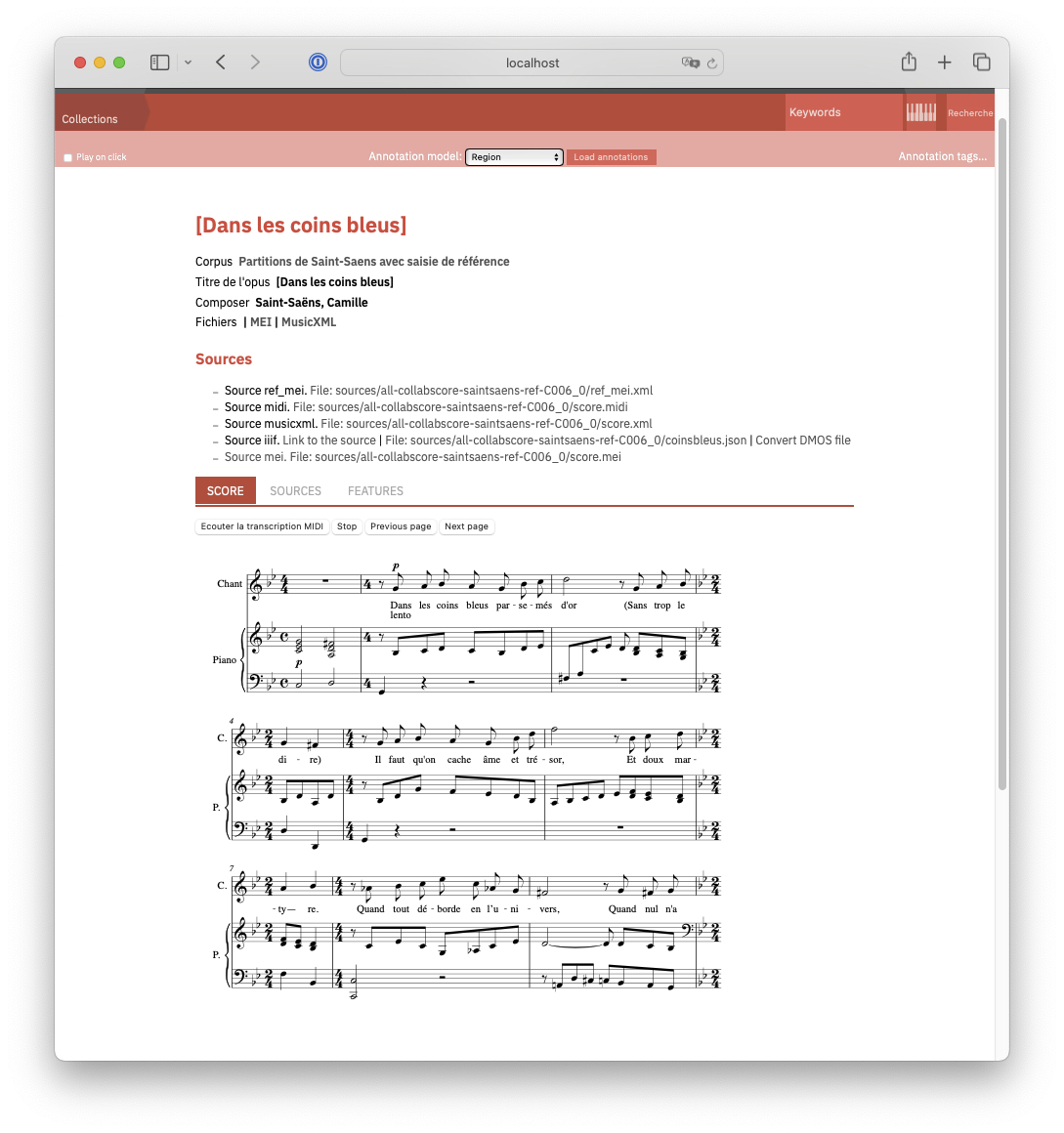
Metadata
Each opus is described by a short list of pre-defined attributes:
- a title, in short and detailed form. The short form is used for navigation purposes: see the breadcrumb at the top of the page
- a description, also in short and detailed forms.
- a composer (optional)
Additionally, a list of free metadata can be added, as a list of key-value pairs.
Score
The default display of an Opus in Neuma is taken from a MEI or MusicXML file. They must be provided at the Opus creation.
Sources
A list of sources can be associated to an Opus. Whereas an opus gathers information about a musical work, a source provide an actual digital representation of this work. A source is essentially a digital document which can be
- a file associated to the source, locally stored in Neuma, or
- an external document referred to by it URL.
Both the MEI and MusicXML files used for displaying an Opus in Neuma are alos stored as sources. In addition, here is a non limitative list of source examples:
- an image of a legacy score, stored in a digital library (e.g., Gallica), and referred to by it URL;
- an audio file, stored locally
- a video, stored in an external media server (e.g., YouTube)
- any encoding of a score, in any format
- a textbook
Each source is described by a short list of pre-defined attributes:
- a code that serves as a unique identifier to refer to a source in the context of its opus
- a description
- a type (image, audio, XML, etc.)
- a URL, or
- a file content